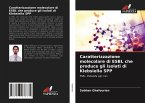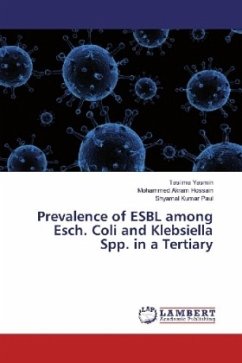ESBLs are known as extended-spectrum because they are able to hydrolyze a broader spectrum of beta- lactam antibiotics than the simple parent beta- lactamases from which they are derived. Such ESBLs have also the ability to inactivate beta-lactam antibiotics containing an oxyimino-group such as oxyimino-cephalosporins (eg; ceftazidime, ceftriaxone, cefotaxime) as well as oxyimino- monobactam. Furthermore, they are not active against cephamycins and carbapenems. Generally, they are inhibited by beta-lactamase-inhibitors such as clavulanate and tazobactam. ESBLs have been found in a wide range of Gram-negative rods. However, the vast majority of strains expressing these enzymes belong to the Enterobacteriaceae family. K.pneumoniae remains as the major ESBL-producer.








